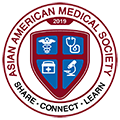Autism Spectrum Disorder - a public health crisis
Introduction
Autism spectrum disorder is a developmental disability of the brain that affects every one in 66 children globally. A child’s social communication skills, interests, and sometimes intelligence level are affected when they are considered autistic. ASD shows a genetic aspect but the full pathology is not known. It is called a spectrum because of the wide range of symptoms and severity as well as individuality among ASD cases. Severe autism can lead to nonverbal children who have lower-than-average intelligence while high-functioning autistic children can simply only have difficulty understanding social cues.
Some common symptoms involve:
- Avoiding eye contact
- Having repetitive behavior such as flapping hands or turning in circles
- Delayed language development
- Unable to express or recognize emotions
Screening and early intervention is the essential process for supporting autistic children. Diagnosis can happen as early as 1 year old, and a wide range of interventions and treatments are available usually with considerable cost. Common types of treatments are applied behavioral analysis, sensory integration therapy, educational therapy… Different combinations and treatment intensities are highly dependent on individual situations and needs.
As autism screening became more available and accessible, an increasing percentage of the population needs treatments and support not usually covered by insurance, so the public health problem arises. The goal of these discussions is to examine the difficulties individual faces to access treatments, to assess provincial support for autistic treatments, and to suggest solutions or actions.
